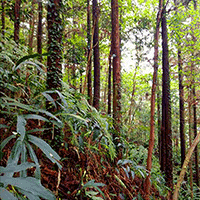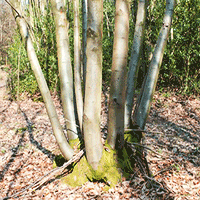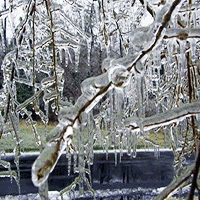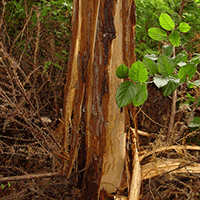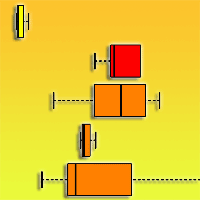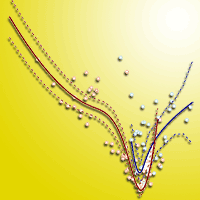The regular planting and periodic harvesting of a single tree species are features of plantations, which are associated with a reduction of biodiversity. Such plantations are strongly encouraged to be converted into mixed forests. However, the spatial structure dynamics of plantations during the conversion process are poorly understood. In subtropical regions, thinned forest of Chinese fir (Cunninghamia lanceolata [Lamb.] Hook.) and mixed forest of Chinese fir and Michelia macclurei Dandy are considered two ideal modes of plantation management. In this study, we analyzed the spatial structure dynamics of two forest stands and their six main tree populations over a rotation of 27 years, using spatial point analyses. We found that Chinese fir and M. macclurei had a regular distribution pattern (scale, r = 0-1 m) in the early stages of planting (1993), and Chinese fir maintained this pattern after experiencing self-thinning and selective cutting. In addition, non-planted tree species (i.e., natural regeneration of late-seral species, NRLSS) displayed significantly intraspecific clumping, which resulted in the distribution patterns of the forest stands changing from regular to aggregated (r = 0-5.5, 1-20 m), and the species distribution of mixed forest changed from random to clumped (r = 0-20 m). Moreover, during the management period (1993-2018), individuals were significantly differentiated in terms of size, and some small trees in the thinned forest were aggregated together. For the NRLSS, the diameter at breast height was randomly distributed (r = 0-20 m). Furthermore, Chinese fir and M. macclurei were separated at r = 0-1 m in the planting stage, but any pair of the six main populations in the thinned forest and mixed forest were randomly correlated over a rotation. Finally, the nearest neighbor distance of the stands became shorter after conversion, while the values for Chinese fir increased. After 25 years, the mixed plantation and the thinned plantation had a complex spatial structure. They develop towards natural forests and could be used as a template for future plantation management.
Keywords
, , , , ,
Citation
Li Y, Xu J, Wang H, Nong Y, Sun G, Yu S, Liao L, Ye S (2021). Long-term effects of thinning and mixing on stand spatial structure: a case study of Chinese fir plantations. iForest 14: 113-121. - doi: 10.3832/ifor3489-014
Academic Editor
Giorgio Vacchiano
Paper history
Received: Apr 29, 2020
Accepted: Jan 06, 2021
First online: Mar 08, 2021
Publication Date: Apr 30, 2021
Publication Time: 2.03 months
© SISEF - The Italian Society of Silviculture and Forest Ecology 2021
Open Access
This article is distributed under the terms of the Creative Commons Attribution-Non Commercial 4.0 International (https://creativecommons.org/licenses/by-nc/4.0/), which permits unrestricted use, distribution, and reproduction in any medium, provided you give appropriate credit to the original author(s) and the source, provide a link to the Creative Commons license, and indicate if changes were made.

Breakdown by View Type
(Waiting for server response...)
Article Usage
Total Article Views: 51159
(from publication date up to now)
Breakdown by View Type
HTML Page Views: 44538
Abstract Page Views: 3036
PDF Downloads: 2965
Citation/Reference Downloads: 9
XML Downloads: 611
Web Metrics
Days since publication: 1735
Overall contacts: 51159
Avg. contacts per week: 206.41
Article Citations
Article citations are based on data periodically collected from the Clarivate Web of Science web site
(last update: Mar 2025)
Total number of cites (since 2021): 15
Average cites per year: 3.00
Publication Metrics
by Dimensions ©
Articles citing this article
List of the papers citing this article based on CrossRef Cited-by.
(1)
Adler PB, Smull D, Beard KN, Choi RT, Furniss T, Kulmatiski A, Meiners JM, Tredennick AT, Veblen KE (2018)Competition and coexistence in plant communities: intraspecific competition is stronger than interspecific competition. Ecology Letters 21: 1319-1329.
CrossRef |
Gscholar
(2)
Baddeley A, Turner R (2005)spatstat: an R package for analyzing spatial point patterns. Journal of Statistical Software 12 (6): 1-42.
CrossRef |
Gscholar
(3)
Cai D, Lu L, Jia H, He R (2007)The influence of closing for afforestation on vegetation diversity restoration under Chinese fir plantation. Forest Research 20 (3): 319-327.
Gscholar
(4)
Chen C, Zhang J, Zhou C, Zheng H (1990)Researches on improving the quality of forest land and the productivity of artificial
Cunninghamia lanceolata stands. Journal of Applied Ecology 1 (2): 97-106.
Online |
Gscholar
(5)
Cole H, Newmaster S, Lanteigne L, Pitt D (2008)Long-term outcome of precommercial thinning on floristic diversity in north western New Brunswick, Canada. iForest 1: 145-156.
CrossRef |
Gscholar
(6)
Crecente-Campo P, Pommerening A, Rodríguez-Soalleiro R (2009)Impacts of thinning on structure, growth and risk of crown fire in a
Pinus sylvestris L. plantation in northern Spain. Forest Ecology and Management 257: 1945-1954.
CrossRef |
Gscholar
(7)
Felton A, Lindbladh M, Brunet J, Fritz O (2010)Replacing coniferous monocultures with mixed-species production stands: an assessment of the potential benefits for forest biodiversity in northern Europe. Forest Ecology and Management 260: 939-947.
CrossRef |
Gscholar
(8)
Feng Z, Chen C, Zhang J, Zeng S, Luo R, Chen W (1988)A coniferous broad-leaved mixed forest with higher productivity and ecological harmony in subtropics study on mixed forest of
Cunninghamia lanceolata and
Michelia macclurei. Acta Phytoecologica et Geobotanica Sinica 12 (3): 165-180.
Online |
Gscholar
(9)
Getzin S, Dean C, He F, Trofymow JA, Wiegand K, Wiegand T (2006)Spatial patterns and competition of tree species in a Douglas-fir chronosequence on Vancouver Island. Ecography 29: 671-682.
CrossRef |
Gscholar
(10)
Harrington TB (2020)Long-term effects of thinning and woody control on longleaf pine plantation development, understory abundance, and tree damage from an ice storm. Forest Ecology and Management 459 (5): 117846.
CrossRef |
Gscholar
(11)
He F, Duncan RP (2000)Density-dependent effects on tree survival in an oldgrowth Douglas fir forest. Journal of Ecology 88: 676-688.
CrossRef |
Gscholar
(12)
Huang X, Liu S, You Y, Wen Y, Wang H, Wang J (2017)Microbial community and associated enzymes activity influence soil carbon chemical composition in
Eucalyptus urophylla plantation with mixing N
2-fixing species in subtropical China. Plant and Soil 414 (1-2): 199-212.
CrossRef |
Gscholar
(13)
Hui G, Zhang G, Zhao Z, Yang A (2019)Methods of forest structure research: a review. Current Forestry Reports 5: 142-154.
CrossRef |
Gscholar
(14)
Kint V, Lust N, Ferris R, Olsthoorn AFM (2000)Quantification of forest stand structure applied to Scots pine (
Pinus sylvestris L.) forests. Investigación Agraria: Sistemas y Recursos Forestales 1: 147-163.
Online |
Gscholar
(15)
Kint V, Meirvenne MV, Nachtergale L, Geudens G, Lust N (2003)Spatial methods for quantifying forest stand structure development: a comparison between nearest-neighbor indices and variogram analysis. Forest Science 49 (1): 36-49.
Online |
Gscholar
(16)
Kitagawa R, Ueno M, Masaki T (2017)Thinning affects understorey tree community assembly in monoculture plantations by facilitating stochastic immigration from the landscape. Applied Vegetation Science 20: 673-682.
CrossRef |
Gscholar
(17)
Kuuluvainen T, Penttinen A, Leinonen K, Nygern M (1996)Statistical opportunities for comparing stand structural heterogeneity in managed and primeval forests: an example from boreal spruce forest in southern Finland. Silva Fennica 30 (2-3): 315-328.
CrossRef |
Gscholar
(18)
Law R, Illian J, Burslem DFRP, Gratzer G, Gunatilleke CVS, Gunatilleke IAUN (2009)Ecological information from spatial patterns of plants: insights from point process theory. Journal of Ecology 97 (4): 616-628.
CrossRef |
Gscholar
(19)
Lexerød NL, Eid T (2006)An evaluation of different diameter diversity indices based on criteria related to forest management planning. Forest Ecology and Management 222: 17-28.
CrossRef |
Gscholar
(20)
Lin K, Huang B (2001)Studies on β-diversity index of undergrowth plant in Chinese fir plantation. Biodiversity Science 9 (2): 157-161.
Online |
Gscholar
(21)
Lin K, Yu X, Huang B, He Z (2001)Dynamical characteristics of undergrowth plant diversity in Chinese fir plantations. Chinese Journal of Applied Environmental Biology 7 (1): 13-19.
Online |
Gscholar
(22)
Li Y, Hui G, Zhao Z, Hu Y (2012)The bivariate distribution characteristics of spatial structure in natural Korean pine broad-leaved forest. Journal of Vegetation Science 23 (6): 1180-1190.
CrossRef |
Gscholar
(23)
Li Y, Ye S, Hui G, Hu Y, Zhao Z (2014)Spatial structure of timber harvested according to structure-based forest management. Forest Ecology and Management 322: 106-116.
CrossRef |
Gscholar
(24)
Li Y, Hui G, Yu S, Yao X, Ye S (2017a)Nearest neighbour relationships in
Pinus yunnanensis var. tenuifolia forests along the Nanpan River, China. iForest 10: 746-753.
CrossRef |
Gscholar
(25)
Li R, Yang Q, Zhang W, Zheng W, Chi Y, Xu M, Fang Y, Gessler A, Li M, Wang S (2017b)Thinning effect on photosynthesis depends on needle ages in a Chinese fir (
Cunninghamia lanceolata) plantation. Science of the Total Environment 580: 900-906.
CrossRef |
Gscholar
(26)
Liu B, Liu Q, Daryanto S, Guo S, Huang Z, Wang Z, Wang L, Ma X (2018)Responses of Chinese fir and
Schima superba seedlings to light gradients: Implications for the restoration of mixed broadleaf-conifer forests from Chinese fir monocultures. Forest Ecology and Management 51-57: 419-420.
CrossRef |
Gscholar
(27)
Ming A, Jia H, Zhao J, Tao Y, Li Y (2014)Above- and below-ground carbon stocks in an indigenous tree (
Mytilaria laosensis) plantation chronosequence in subtropical China. PLoS One 9(10): e109730.
CrossRef |
Gscholar
(28)
Ming A, Yang Y, Liu S, Wang H, Li Y, Li H, Nong Y, Cai D, Jia H, Tao Y, Sun D (2018)Effects of near natural forest management on soil greenhouse gas flux in Pinus massoniana (Lamb.) and Cunninghamia lanceolata (Lamb.) Hook. plantations. Forests 9 (5): 229.
CrossRef |
Gscholar
(29)
Omelko A, Ukhvatkina O, Zhmerenetsky A, Sibirina L, Petrenko T, Bobrovsky M (2018)From young to adult trees: how spatial patterns of plants with different life strategies change during age development in an old-growth Korean pine broadleaved forest. Forest Ecology and Management 411: 46-66.
CrossRef |
Gscholar
(30)
Ozbayram AK, Ciçek E (2018)Thinning experiments in narrow-leaved ash (
Fraxinus angustifolia Vahl.) plantations: 10-year results. New Forests 49: 585-598.
CrossRef |
Gscholar
(31)
Petritan IC, Marzano R, Petritan AM, Lingua E (2014)Overstory succession in a mixed
Quercus petraea-Fagus sylvatica old growth forest revealed through the spatial pattern of competition and mortality. Forest Ecology and Management 326: 9-17.
CrossRef |
Gscholar
(32)
Plath M, Mody K, Potvin C, Dorn S (2011)Establishment of native tropical timber trees in monoculture and mixed-species plantations: Small-scale effects on tree performance and insect herbivory. Forest Ecology and Management 261: 741-750.
CrossRef |
Gscholar
(33)
Pommerening A (2002)Approaches to quantifying forest structures. Forestry 75: 305-324.
CrossRef |
Gscholar
(34)
Pommerening A, Särkkä A (2013)What mark variograms tell about spatial plant interactions. Ecological Modelling 251: 64-72.
CrossRef |
Gscholar
(35)
Potvin C, Dutilleul P (2009)Neighborhood effects and size asymmetric competition in a tree plantation varying in diversity. Ecology 90: 321-327.
CrossRef |
Gscholar
(36)
Pretzsch H, Del Río M, Schütze G, Ammer C, Annighöfer P, Avdagic A, Barbeito I, Bielak K, Brazaitis G, Coll L, Drössler L, Fabrika M, Forrester DI, Kurylyak V, Löf M, Lombardi F, Matovic B, Mohren F, Motta R, Den Ouden J, Pach M, Ponette Q, Skrzyszewski J, Sramek V, Sterba H, Svoboda M, Verheyen K, Zlatanov T, Bravo-Oviedo A (2016)Mixing of Scots pine (
Pinus sylvestris L.) and European beech (
Fagus sylvatica L.) enhances structural heterogeneity, and the effect increases with water availability. Forest Ecology and Management 373: 149-166.
CrossRef |
Gscholar
(37)
R Development Core Team (2019)R: a Language and Environment for Statistical Computing. R Foundation for Statistical Computing, Vienna, Austria.
Online |
Gscholar
(38)
Reed DD, Burkhart HE (1985)Spatial autocorrelation of individual tree characteristics in loblolly pine stands. Forest Science 31 (3): 575-587.
Online |
Gscholar
(39)
Sheng W (2001)A study on stand density management and long term productive of Chinese fir (
Cunninghamia lanceolata) plantation. Scientia Silvae Sinicae 37 (5): 2-9.
Online |
Gscholar
(40)
Sheng W, Xue X (1992)Comparisons between pure stands of Chinese fir, Fukiencypress and mixed stands of these two species in growth, structure, biomass and ecological effects. Scientia Silvae Sinicae 28 (5): 397-404.
Online |
Gscholar
(41)
Sun D, Wen Y, Luo Y, Li X, Zhang W, Ming A (2015)Effect of close-to-nature management on species diversity in a
Cunninghamia lanceolata. Forest Research 28 (2): 202-208.
Gscholar
(42)
Taki H, Inoue T, Tanaka H, Makihara H, Sueyoshi M, Isono M, Okabe K (2010)Responses of community structure, diversity, and abundance of understory plants and insect assemblages to thinning in plantations. Forest Ecology and Management 259: 607-613.
CrossRef |
Gscholar
(43)
Trentini CP, Campanello PI, Villagra M, Ritter L, Ares A, Goldstein G (2017)Thinning of loblolly pine plantations in subtropical Argentina: Impact on microclimate and understory vegetation. Forest Ecology and Management 384: 236-247.
CrossRef |
Gscholar
(44)
Wang J, Yan Q, Lu D, Diao M, Yan T, Sun Y, Yu L, Zhu J (2019)Effects of microhabitat on rodent-mediated seed dispersal in monocultures with thinning treatment. Agricultural and Forest Meteorology 275: 91-99.
CrossRef |
Gscholar
(45)
Wang Q, Wang S, Xu G, Fan B (2010)Conversion of secondary broadleaved forest into Chinese fir plantation alters litter production and potential nutrient returns. Plant Ecology 209: 269-278.
CrossRef |
Gscholar
(46)
Wan P, Zhang G, Wang H, Zhao Z, Hu Y, Zhang G, Hui G, Liu W (2019)Impacts of different forest management methods on the stand spatial structure of a natural
Quercus aliena var.
acuteserrata forest in Xiaolongshan, China. Ecological Informatics 50: 86-94.
CrossRef |
Gscholar
(47)
Wiegand T, Moloney KA (2014)A handbook of spatial point pattern analysis in ecology. Chapman and Hall/CRC press, Boca Raton, USA, pp. 47-77.
Gscholar
(48)
Wu Z, Zhou C, Zhou X, Hu X, Gan J (2018)Variability after 15 years of vegetation recovery in natural secondary forest with timber harvesting at different intensities in southeastern China: community diversity and stability. Forests 9 (1): 40.
CrossRef |
Gscholar
(49)
Xiong Y, Sheng W, Zeng M (1995)A study on the development and biomass of undergrowth vegetation in Chinese fir plantation with different thinning intensities. Forest Research 8 (4): 408-412.
Online |
Gscholar
(50)
Yao X, Li Y, Liao L, Sun G, Wang H, Ye S (2019)Enhancement of nutrient absorption and interspecific nitrogen transfer in a
Eucalyptus urophylla ×
Eucalyptus grandis and
Dalbergia odorifera mixed plantation. Forest Ecology and Management 449 (1): 117465.
CrossRef |
Gscholar
(51)
Ye S, Zheng Z, Diao Z, Ding G, Bao Y, Liu Y, Gao G (2018)Effects of thinning on the spatial structure of
Larix principis-rupprechtii plantation. Sustainability 10 (4): 1250.
CrossRef |
Gscholar
(52)
Zhang H, Zhou G, Wang Y, Bai S, Sun Z, Berninger F, Bai Y, Penttinen P (2019)Thinning and species mixing in Chinese fir monocultures improve carbon sequestration in subtropical China. European Journal of Forest Research 138: 433-443.
CrossRef |
Gscholar
(53)
Zheng Y, Chen L, Hong W (1998)Study on productivity and soil properties of mixed forests of Chinese fir and
Phyllostachys heterocycla cv.
pubescens. Scientia Silvae Sinicae 34 (1): 16-23.
Gscholar
(54)
Zheng Y, Zhao W, Zhang G (2017)Spatial analysis of a
Haloxylon ammodendron plantation in an oasis-desert ecotone in the Hexi corridor, Northwestern China. Forests 8 (6): 200.
CrossRef |
Gscholar
